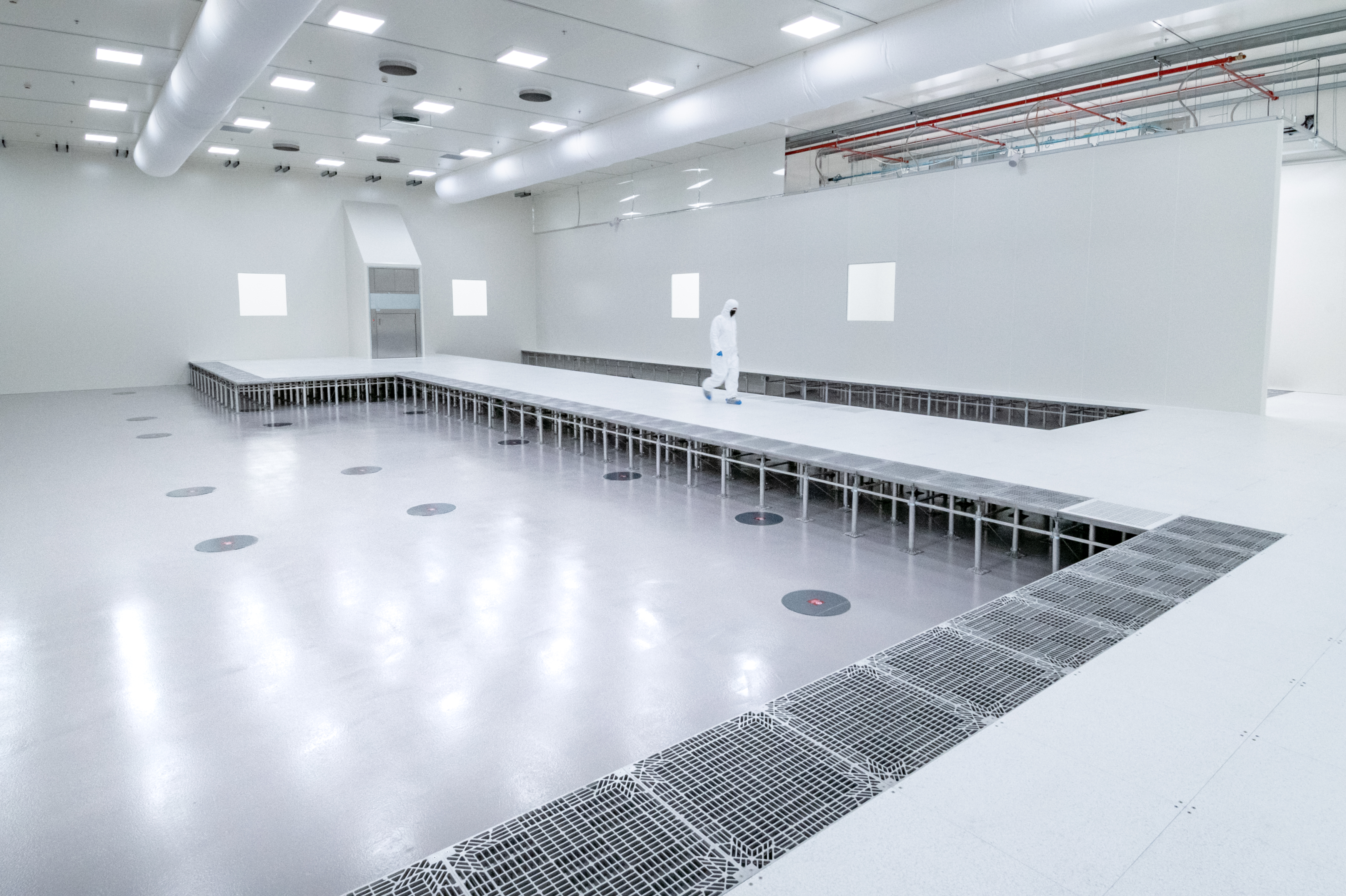Vincent, Project Manager at ER2i, presents the specifics of designing and building an Anhydrous room through his experience.
What does the word anhydrous mean?
Vincent “It literally means containing no water. Therefore, it is an area in which the hygrometric conditions are specific with very low humidity.
To give you an idea of the level, we are in an environment with approximately 100 times less water content than in a clean room.
Humidity levels are very low, so we no longer refer to the water content in the air but to the dew point ( DP). It is common to see a definition of DP -30, which corresponds to a room with a dew point of -30°C, so a water content close to 0.2 g/kg of dry air.
Controlling an anhydrous environment amounts to controlling water vapor. However, water vapor migrates naturally in environments, through materials, which release water vapor, internal production, leaks, etc. “
Could you give us your definition of an Anhydrous Room?
Vincent “So these enclosures are very specific in terms of the sealing approach, the barriers that block this migration, and the control of the internal production…and in particular, the breathing of the occupants.
Therefore, these are environments that must be controlled:
- By calculation and occupancy assumptions
- By design with the right barrier level
- By monitoring their construction because a difference in seal can compromise performance.
Therefore, the means to control throughout each stage of the construction process are required.
Consequently, these are not very flexible environments. The design data clearly determines the operating conditions: occupants, extractions (therefore, fresh air…etc.). “
What are the specifics of designing an Anhydrous room?
Vincent “We talked about this briefly before.
The important aspect of anhydrous rooms is that the design directly depends on the basic data and that the room very strictly complies with the assumptions made in the calculations:
- Extraction requirements, i.e. fresh air (the greatest contribution in terms of water loading)
- The occupants
- Assumptions regarding leaks and parasitic loads taken into account in the calculations.
For the first 2 items, we are dealing with calculations: with a good model and the right data, we obtain the right result. However, we still question the evolutionary capacities (even if very limited).
For the third item, it is a different story.
Leaks and parasitic loads depend on many parameters and design considerations:
- Surface leaks: depending on the extent of the wall surface area: generally low
- Access points: doors, lock chambers, their characteristics and how they are used
- The choice of fittings and their impact on the seal: lighting fixtures, supply and return air vents, fluid networks, sprinklers, etc.
- The openings made, the way they are treated, the design choices for the room (all in / all out) or the arbitration on the position of the fluids (inside: less openings, outside: more penetrations)
- And more generally, the quality of workmanship, and therefore, the confidence in the assembly and treatment methods. ”
What are the specific technical elements for this type of area?
Vincent “All of the specific equipment for anhydrous rooms satisfy these objectives:
- Suitable materials and assembly methods
- The conventional heat and cold production equipment, these rooms consume a lot of energy
- The specific dehumidification equipment
- The usual items (fresh air, extractions, fluids, etc.) that remain conventional, even if some characteristics are specific to anhydrous rooms. ”
Can you tell us about ER2i’s strengths for these projects and what you have experienced?
Vincent “I think that our strength is that we have extensive experience in clean rooms and anhydrous rooms.
An anhydrous room often also has a cleanliness classification.
Thanks to this two-fold experience, the possibilities and constraints of the two worlds can be combined, and be relevant in this common area where the anhydrous rooms are located, whether for chemistry, batteries or the pharmaceutical industry.
Another strength that comes to mind is the ability to calculate and simulate through modeling. Routines lead to ideas, but calculations make the situation clear. And in complex problems it is wise to limit the number of variables, which is what calculations are for.
Our engineers have been trained and therefore, can be a proactive support in the project, guiding the design choices or at least controlling the impacts.”
Can you talk about a project that ER2i has completed?
Vincent “
The most recent project involving an anhydrous room environment is the construction of the pilot line for VERKOR, RENAULT’s partner for the production of new-generation batteries for the brand’s forthcoming “premium” cars.
In this project, the idea was to pave the way to implement their future giga-FACTORY in record time.
The technically demanding environment of the manufacturing process requires a simultaneously DP-40, ISO7 and thermally stable environment, thus combining the two technical models of a controlled environment mentioned previously.
The greatest challenge of this adventure is to have an operational pilot line in less than three years, whereas a standard industrial development project would require five years of work.
To obtain synergy that is constructive, methodology and organization are required, and all partners must be fully implicated. The most important aspect of the project was to maintain this flexibility at all times, allowing the design and construction work to be carried out simultaneously while adapting to the needs of the process. ”


